From the Queen of Sheba to Britain’s Duchess of Cambridge, Sri Lanka’s sapphires have adorned royalty through the ages, but a flood of cheap imitations is threatening the island’s reputation for the precious stones.
Ceylon sapphires, known after the island’s colonial-era name, enjoyed a huge boost five years ago when it was revealed that one formed the centerpiece of the engagement ring Prince William gave Catherine Middleton.
They are renowned as the best sapphires in the world, but gem traders say artificial stones — colored glass that to the untrained eye is virtually indistinguishable from sapphires — are being passed off as the real thing to unsuspecting buyers.
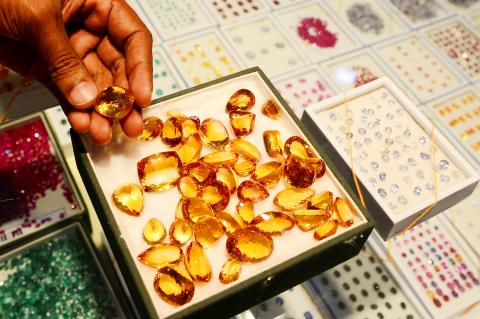
Photo: AFP
They fear that is tarnishing the image of the gems, seen as a major potential income stream for an economy still recovering from decades of civil war.
“This is the biggest threat to our industry. Our reputation is at stake,” said Nissanka Weerasena, who owns a chain of upmarket jewelry stores in Sri Lanka.
“These colored pieces of glass imported by the kilo are killing the market for gems,” he said.
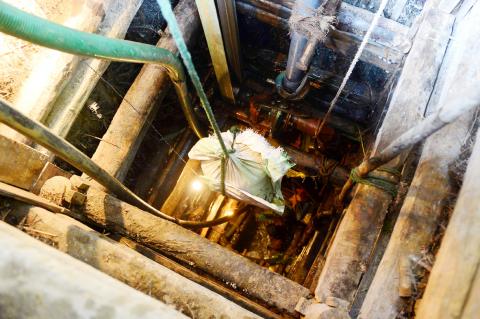
Photo: AFP
Stories of buyers getting conned into buying fakes are legion.
National Gem and Jewellery Authority chairman Asanka Welagedara recalled how one Australian buyer who spent US$14,000 only discovered that nearly half the stones he had been sold were fakes when he had them tested by the state-run regulator — by which time it was too late.
Another scam is to heat treat opaque, semi-precious stones to give them the color and clarity of a real sapphire.
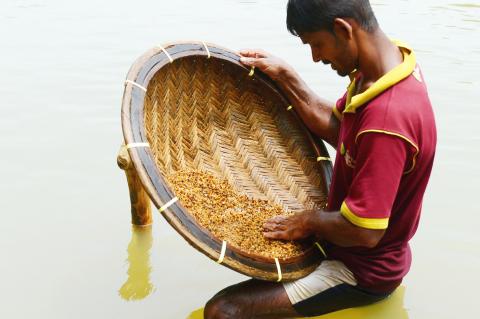
Photo: AFP
“The technique of heat treating semi-precious stones originated in Thailand, but our people have now perfected the art,” Welagedara said.
“There is a 10-fold price difference between a heat-treated blue sapphire and a natural stone, so naturally there is a temptation to sell treated stones as natural ones,” he said.
Problems are particularly common along Sri Lanka’s southern coast, a popular tourist draw.
“We are seeing a new trend of cheating, especially along the coastal tourist belt,” a senior Sri Lankan police officer said on condition of anonymity.
Geologists say more than four-fifths of Sri Lanka’s 65,000km2 land mass could contain underground gems. The best-known mining area is Ratnapura, or the City of Gems, where a stone thought to be the largest blue star sapphire in the world was discovered last year.
Blue star sapphires, so called because they reveal a six-line star when placed under light, are particularly sought after.
The owner — a Sri Lankan gem dealer who said he wanted to remain anonymous for fear of being robbed — has valued the stone at US$300 million, although he would not disclose how much he paid for it.
On the banks of the Kalu River that flows through Ratnapura, hundreds of young men pan for gems, hoping that they too might one day strike it rich.
Officially, there are 200,000 miners employed in the industry, but another half a million are believed to be working illegally.
Eranga Kumara, 22, is an illegal prospector who dives between 3m and 4.5m to the river bed to look for stones.
“Usually we get a few stones and I make about 10,000 rupees [US$70] a day,” Kumara said on the banks of the Kalu River as his friends kept a look out for police.
“But we can only work during the dry season, from January to March,” he said.
Dulgalage Jayatillake acts as a middleman between these small-time miners and the merchants who come to Ratnapura from Colombo and elsewhere in search of gems.
At a makeshift exchange on a bridge in Ratnapura where he and dozens of others line up every morning waiting for buyers, there are concerns that artificial stones are scaring away buyers.
“I meet the miners directly and buy from them. That is to make sure I don’t get caught out by fakes,” Jayatillake said.
“Imitation stones are giving everyone a bad name,” he said.
The Gem and Jewellery Authority says it cannot stop the import of artificial stones, which are necessary for the low-end costume jewellry industry.
However, it is taking steps to prevent fraud by vetting dealers and giving them a stamp of approval that buyers can trust.
For 500 rupees it will issue a certificate of authenticity, which Welagedara says is the “best guarantee against fraud.”
Gem expert Rohan Pitigala said it was difficult for the untrained eye to spot an imitation gem stone, but not impossible.
“If you see a stone which is flawless, it is too good to be true,” he said.
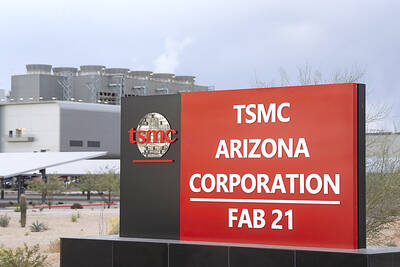
Taiwan Semiconductor Manufacturing Co (TSMC, 台積電), the world’s biggest contract chipmaker, booked its first-ever profit from its Arizona subsidiary in the first half of this year, four years after operations began, a company financial statement showed. Wholly owned by TSMC, the Arizona unit contributed NT$4.52 billion (US$150.1 million) in net profit, compared with a loss of NT$4.34 billion a year earlier, the statement showed. The company attributed the turnaround to strong market demand and high factory utilization. The Arizona unit counts Apple Inc, Nvidia Corp and Advanced Micro Devices Inc among its major customers. The firm’s first fab in Arizona began high-volume production
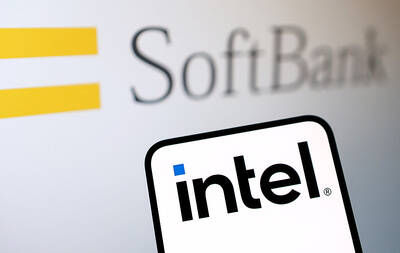
VOTE OF CONFIDENCE: The Japanese company is adding Intel to an investment portfolio that includes artificial intelligence linchpins Nvidia Corp and TSMC Softbank Group Corp agreed to buy US$2 billion of Intel Corp stock, a surprise deal to shore up a struggling US name while boosting its own chip ambitions. The Japanese company, which is adding Intel to an investment portfolio that includes artificial intelligence (AI) linchpins Nvidia Corp and Taiwan Semiconductor Manufacturing Co (TSMC, 台積電), is to pay US$23 a share — a small discount to Intel’s last close. Shares of the US chipmaker, which would issue new stock to Softbank, surged more than 5 percent in after-hours trading. Softbank’s stock fell as much as 5.4 percent on Tuesday in Tokyo, its
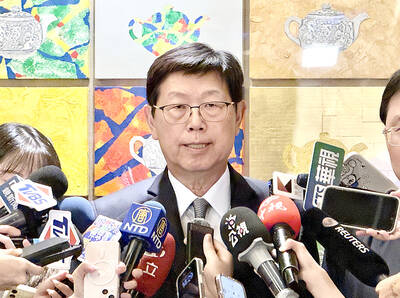
COLLABORATION: Softbank would supply manufacturing gear to the factory, and a joint venture would make AI data center equipment, Young Liu said Hon Hai Precision Industry Co (鴻海精密) would operate a US factory owned by Softbank Group Corp, setting up what is in the running to be the first manufacturing site in the Japanese company’s US$500 billion Stargate venture with OpenAI and Oracle Corp. Softbank is acquiring Hon Hai’s electric-vehicle plant in Ohio, but the Taiwanese company would continue to run the complex after turning it into an artificial intelligence (AI) server production plant, Hon Hai chairman Young Liu (劉揚偉) said yesterday. Softbank would supply manufacturing gear to the factory, and a joint venture between the two companies would make AI data
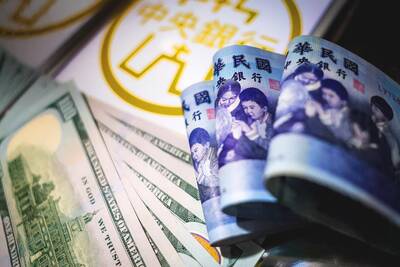
DOLLAR SIGNS: The central bank rejected claims that the NT dollar had appreciated 10 percentage points more than the yen or the won against the greenback The New Taiwan dollar yesterday fell for a sixth day to its weakest level in three months, driven by equity-related outflows and reactions to an economics official’s exchange rate remarks. The NT dollar slid NT$0.197, or 0.65 percent, to close at NT$30.505 per US dollar, central bank data showed. The local currency has depreciated 1.97 percent so far this month, ranking as the weakest performer among Asian currencies. Dealers attributed the retreat to foreign investors wiring capital gains and dividends abroad after taking profit in local shares. They also pointed to reports that Washington might consider taking equity stakes in chipmakers, including Taiwan Semiconductor